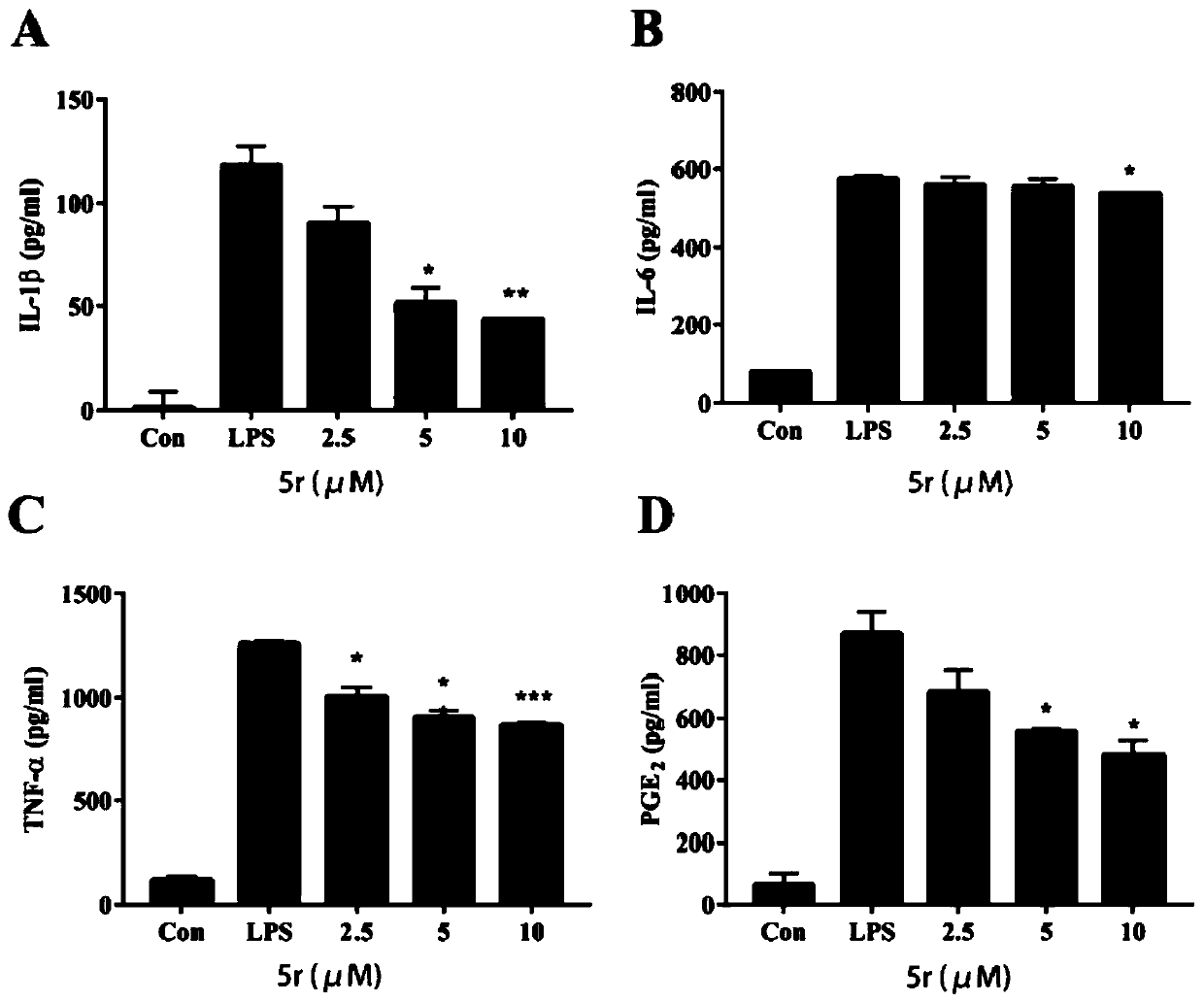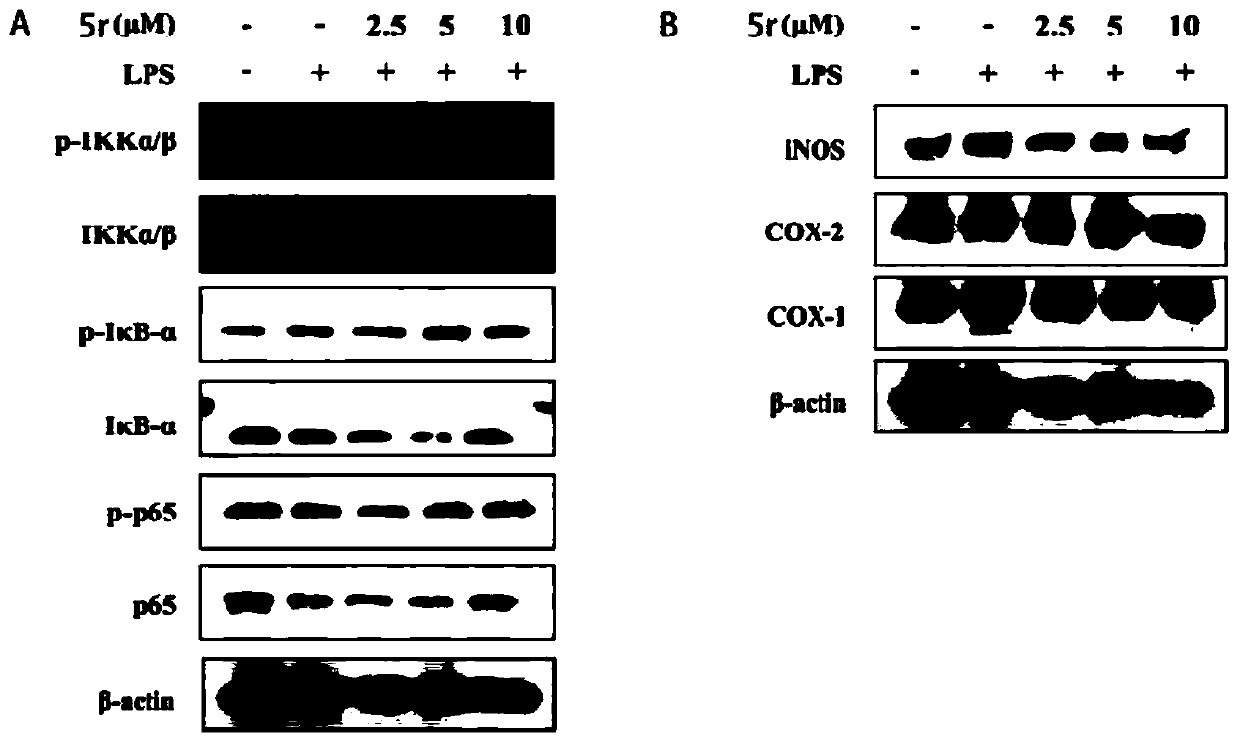Aloe-emodin nitrogen-heterocyclic derivative as well as preparation method and application thereof
A heterocyclic group and heteroatom technology, applied in the field of aloe-emodin nitrogen heterocyclic derivatives and its preparation, can solve problems such as low bioavailability, poor intestinal absorption, and limitations in clinical development and application
- Summary
- Abstract
- Description
- Claims
- Application Information
AI Technical Summary
Problems solved by technology
Method used
Image
Examples
Embodiment 1
[0155] Embodiment 1, the preparation of intermediate 3-(hydroxymethyl)-1,8-dimethoxyanthracene-9,10-dione
[0156]
[0157] Dissolve aloe-emodin (10.8g, 40mmol) in 300mL acetone, add dimethyl sulfate (9.5mL, 100mmol), potassium carbonate (22.1g, 160mmol), and reflux at 60°C for 12h. After the reaction, the mixture was cooled to room temperature and filtered. The residue was washed with water and dried in air to obtain compound 2 as a yellow solid (yield: 78%). 1 H NMR (400MHz, DMSO-d 6 )δ7.78–7.73(m,1H),7.71–7.66(m,2H),7.54(dd,J=8.2,1.3Hz,1H),7.46(d,J=1.5Hz,1H),5.54(s ,1H),4.64(s,2H),3.92(s,6H).
Embodiment 2
[0158] Embodiment 2, the preparation of intermediate 3-(chloromethyl)-1,8-dimethoxyanthracene-9,10-dione
[0159]
[0160]Compound 2 (3 g, 10 mmol) was added to 100 mL of thionyl chloride, and refluxed at 90° C. for 8 h. After the reaction, the solvent was spin-dried, the residue was quenched with ice water, and extracted three times with ethyl acetate, 50 mL each time. Combine the organic phases and wash with NaHCO 3 solution, followed by anhydrous Na 2 SO 4 dry. Purification by silica gel column chromatography (DCM:MeOH volume ratio 95:5, gradient elution) gave bright yellow solid compound 3 (yield: 65%). 1 H NMR (400MHz, DMSO-d 6 )δ7.78–7.72(m,2H),7.69(dd,J=7.6,1.2Hz,1H),7.60(d,J=1.6Hz,1H),7.54(dd,J=8.3,1.3Hz,1H ),4.90(s,2H),3.92(d,J=6.5Hz,6H).
Embodiment 3
[0161] Example 3, Preparation of 3-((3-fluorobutyridin-1-yl)methyl)-1,8-dimethoxyanthracene-9,10-dione (4a)
[0162]
[0163] Compound 3 (158 mg, 0.5 mmol), 3-fluoroazetidine hydrochloride (126 mg, 0.5 mmol), potassium iodide (catalytic amount) and potassium carbonate (138 mg, 1 mmol) were dissolved in 15 mL of DMF / MeCN mixed solution Medium (the volume ratio of DMF and MeCN is 1:4), heated at 70°C for 8h. After the completion of the reaction monitored by TLC, it was diluted with 20 mL of ethyl acetate, and extracted twice with 15 mL of water each time. The organic phase was washed with saturated brine, followed by anhydrous Na 2 SO 4 dry. Compound 4a was obtained by column chromatography (DCM:MeOH volume ratio 97:3, gradient elution). Compound 4a is a yellow solid with a yield of 63%; m.p: 143-144°C; 1 H NMR (400MHz, Chloroform-d) δ7.83 (dd, J = 7.7, 1.2Hz, 1H), 7.71 (d, J = 1.5Hz, 1H), 7.63 (t, J = 8.0Hz, 1H), 7.33 –7.27(m,2H),5.17(dp,J=57.3,5.4Hz,1H),4.01(d,J=3.9Hz...
PUM
| Property | Measurement | Unit |
|---|---|---|
| Average body length | aaaaa | aaaaa |
Abstract
Description
Claims
Application Information
 Login to View More
Login to View More - R&D
- Intellectual Property
- Life Sciences
- Materials
- Tech Scout
- Unparalleled Data Quality
- Higher Quality Content
- 60% Fewer Hallucinations
Browse by: Latest US Patents, China's latest patents, Technical Efficacy Thesaurus, Application Domain, Technology Topic, Popular Technical Reports.
© 2025 PatSnap. All rights reserved.Legal|Privacy policy|Modern Slavery Act Transparency Statement|Sitemap|About US| Contact US: help@patsnap.com



